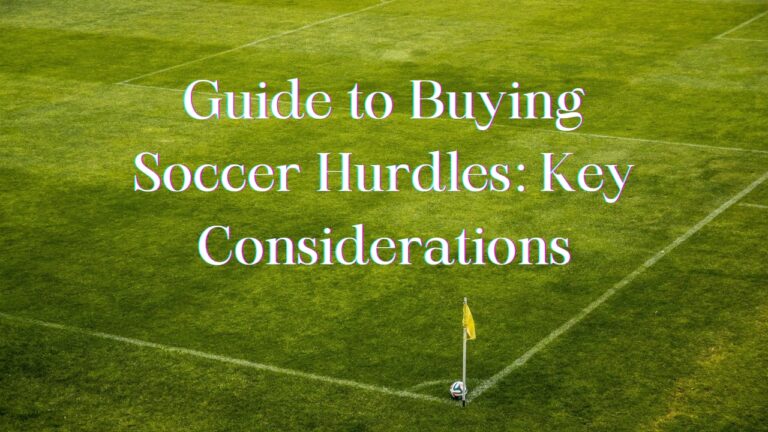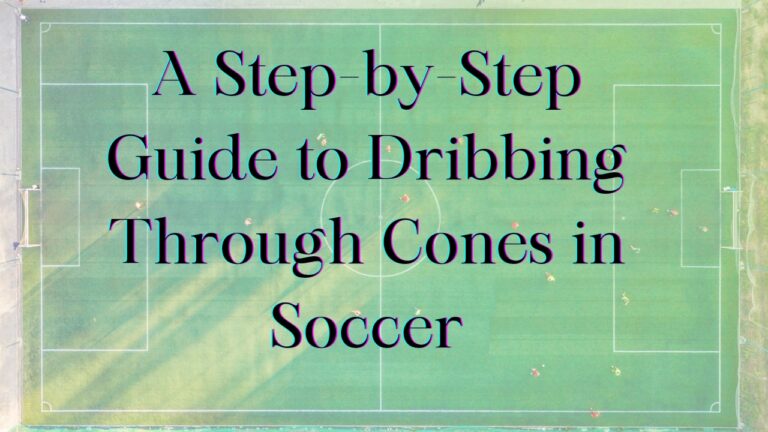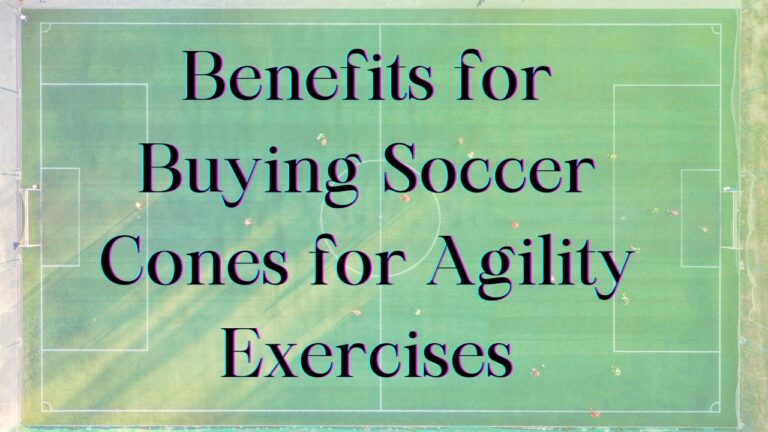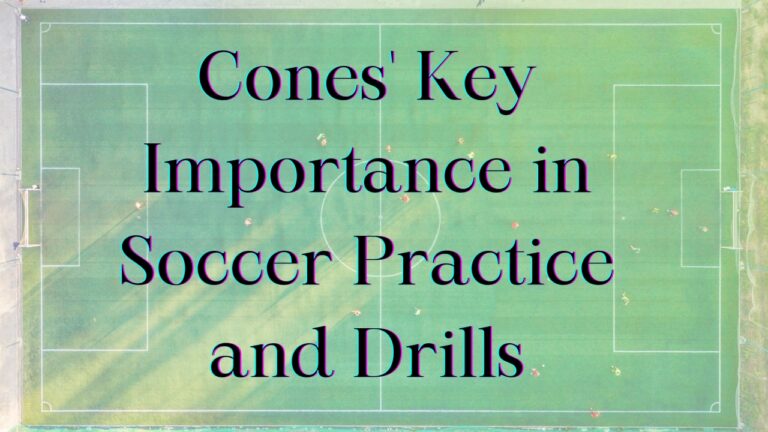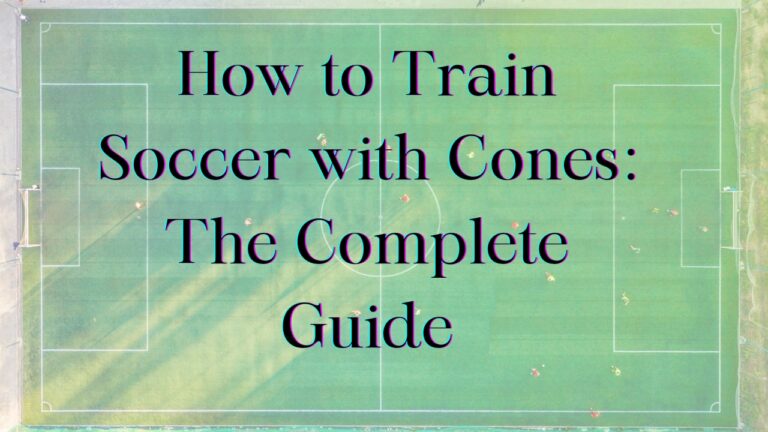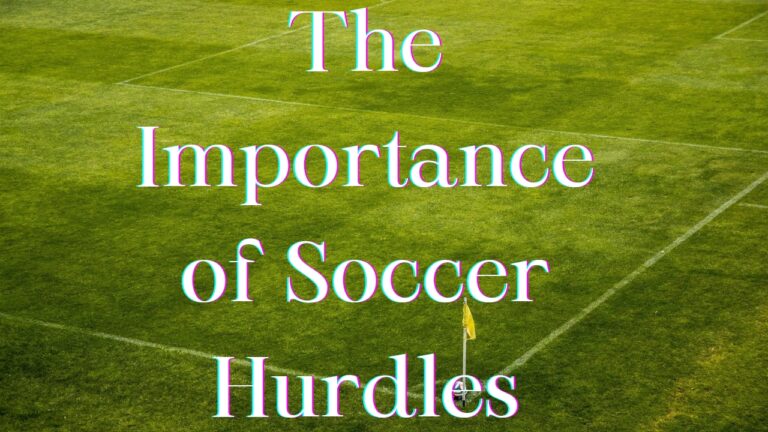Soccer is one of the most popular sports in the world. It requires quick footwork, excellent ball control, spatial awareness, and more. Using cones is an excellent way for beginning soccer players to develop and sharpen these core skills through drills and exercises.
But where do you start when setting up cone drills as a beginner? This complete guide will walk you through everything you need to know about using cones for soccer training as a beginner.
Setting Up Your Soccer Training Area with Cones
The first step to using the power of cone drills for your soccer training is properly setting up your work area. For beginners, this includes determining how much space you need, organizing your cones, and placing them strategically on the field.
When just starting with soccer cone drills, you can use a manageable amount of space. A small section of a field or open grass area about 10-15 yards long and 10 yards wide is plenty for foundational drills. As you advance, you can expand or extend the grid.
Mark off the boundaries of your workspace with cones. Plastic disc cones are the most common, available in bright colors for high visibility. Use cones of different colors to define separate areas or stations. For example, place blue cones along the left boundary and orange cones on the right.
Strategic cone placement is key. Avoid placing cones too close together, which can hinder the development of technical skills. Leave at least 1-2 yards between cones for straight-line dribbling drills. For turning drills, allow wider gaps of 2-3 yards. Adjust cone placement as needed based on the drill.
Essential Soccer Cone Drills for Beginners
Once your training area is set up with cones, it’s time to start drilling. There are endless cone exercises to choose from, but these fundamental drills are essential for beginning players:
Zig Zag Dribbling
This classic drill develops close ball control and cutting ability. Place a series of 6-10 cones in a zigzag pattern about 2 yards apart. Dribble through the cones, zig-zagging back and forth while maintaining close control of the ball. Repeat, increasing speed as possible.
Figure 8 Dribbling
Dribble around a set of cones placed in the shape of a figure 8. Go slow at first, focusing on keeping the ball tight and turning sharply around the cones. Then increase speed while maintaining control. Variation: complete a figure 8 relay race with teammates.
Dribbling Circles
Place one taller cone in the center surrounded by smaller cones in a circle 2-3 yards out. Dribble in circles around the center cone, staying close to the outside cones. Reverse direction for two-footed ability.
Pass and Receive
Position two cones 1-2 yards apart. Pass the ball back and forth between the cones, working on accuracy. Move further back for longer passing. Receive the ball with different parts of your feet.
Cone Gates
Set up a series of “gates” made with cones 2-3 yards apart. Dribble through each gate with the ball under control. Work on changing speed and direction between gates. Can also pass through with a teammate.
Drills to Improve Ball Control and Footwork
In addition to foundational drills, beginning players should spend time on cone exercises that enhance specific technical skills like ball control, footwork, and body coordination with the ball. Here are some great drills to include:
Close Footwork with Ball
Place a cone 1-2 yards in front of you. Move the ball side to side and front to back, completing various footwork patterns around the cone while keeping the ball close. Shuffle side to side, tap dance, hopscotch – get creative!
Toe Taps
Tap the top of a stationary ball back and forth using just your toes. Work on keeping your toes up and striking tight. Switch feet. Can also tap side to side.
Roll The Ball Side to Side
Place the bottom of one foot gently on top of the ball. Roll the ball from side to side beneath your foot. Use both the inside and outside of the foot.
Pull Back Turns
While dribbling, stop the ball and pull it back with the sole of your foot (outside or inside). Quickly change direction bursting the opposite way.
Hop Over Ball
Place the ball between cones 2-3 feet apart. Approach the ball and hop over it with both feet together, landing with control. Hop side to side and front to back.
Drills to Enhance Dribbling and Spatial Awareness
As a beginner, it’s important to develop dribbling technique along with spatial awareness – having a sense of the field, opponents, and teammates around you. Here are some excellent cone drills to improve these dual skills:
Dribbling Relay Races
Set up a zig-zag course with cones. Have players dribble through as fast as possible, keeping close control. The first to finish wins. Teaches speed dribbling and control.
Cone Maze
Set up a grid or circuit of cones with multiple turns and changes of direction. Dribble through controlling the ball and navigating tight spaces. Expand the maze as skills improve.
Tight Turns
Place 4-5 cones in a tight square about 1 yard apart. Dribble around cones making very tight turns. Repeat turning in both directions.
Acceleration and Deceleration
Place two cones 10 yards apart. Dribble fast towards the first cone then sharply cut and accelerate in the other direction towards the second cone. Teaches speed control.
Head Up Dribbling
Have players dribble across the field with heads up, calling out the location of cones they see ahead to improve awareness. Coaches can show different color cones to identify.
Fun Soccer Cone Game Drills for Beginners
While technical training is important, keeping drills fun and engaging is key for beginning soccer players. Try these fun cone games to keep kids motivated:
Cone Steal Away
Set up 10+ cones in a grid. Divide players into two teams, each with a home base cone. Players try to steal cones from the other team and bring them to their home base. Most cones collected wins.
Dribbling Tag
Assign 1-2 players as “it”. Dribble around the grid avoiding taggers. If tagged, dribble through cone gates to rejoin. The last players tagged win. Teaches dribbling under pressure.
Cone Knockout
Stand cones in a grid. Dribble and try to knock over other players’ cones while protecting your own. If a cone falls, you’re out. The last player with cone standing wins.
Keep Away
In a grid, one team passes and keeps the ball away from the defender team. Implement zone passing rules. Tick the number of passes without defender interceptions.
Soccer Tennis
Set up cones as a net. Teams pass the ball back and forth, trying to get it past the net. Must pass a certain number of times before “volley”. Score points like tennis.
Defensive Drills with Cones
While offensive skills are often the focus of beginning training, introducing some basic defensive techniques is beneficial. Use cones to set up drills that teach defending principles:
Shadow Defender
The attacking player dribbles while the defender mirrors movement staying 1-2 yards away. No stealing. Teaches positioning and timing without pressure.
Sliding Tackling
Place two cones 6 feet apart. Dribble towards the gap and practice sliding tackles through the gate. Start slow, then increase speed with proper form.
Block Tackling
Set up a cone “attacker” with a ball. Defender moves side to side blocking attempted breaks towards goal. Don’t allow dribble penetration.
1 vs. 1 Defending
In a small grid, one player dribbles while the other defends. Focus on proper pressures, angles, and timing of challenges. Switch roles.
Introducing defensive technique through drills gives beginning players awareness of both sides of the ball.
Tips for Coaches and Parents on Cone Drills
To maximize the benefits of cone training for young beginners, here are some top tips:
- Start with proper spacing between cones – 1-2 yards for control drills and up to 3-5 yards for turns.
- Walk through new drills before adding speed, allowing players to learn technique.
- Keep drills fun and engaging with games, competitions, and teamwork.
- Focus on mastering the skills, not speed. Add pace over time once the basics are solid.
- Progressively increase the difficulty by speed, space, and complexity. Build skills in layers.
- Repeat quality reps for muscle memory. Avoid drills that aren’t technically sound.
Conclusion
Using cones strategically to practice core soccer skills accelerates development in beginners. Make sure to focus on drills that establish strong technical foundations. As skills improve with quality repetitions, introduce more challenging drills and games that apply skills under pressure.
Cone training establishes muscle memory that pays dividends as young players mature. With persistence and dedication to deliberate training, cones unlock a beginner’s potential on the pitch.
Author


